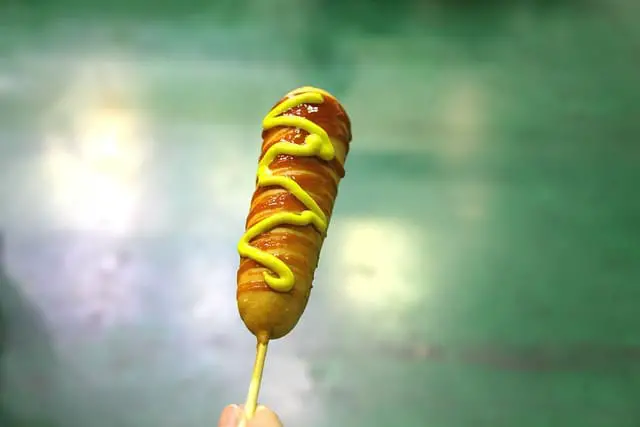Picture this: you’re walking through a field or a marshy area, maybe even on a nature hike, and you come across a strange sight: plants that look like corn dogs! You’ll probably start wondering a few things. Are your eyes playing tricks on you because you’re hungry? Or are there 10 plants that look like corn dogs?
There are many species of plants which can look, either at a distance or up close, to a corndog. However, the plants that bear the closest resemblance to corn dog snacks are cattails, and among cattails, none is more similar to corn dogs than the common cattail!
If you’re a fan of corn dogs, you’ll be surprised at just how many plants resemble this delicious snack. While cattails take the crown for the closest resemblance to a corn dog, there are several other plants that could easily be mistaken for the popular fair food.
In this article, we’ll use our research to bring you the ten plants that look a lot like tasty corn dogs, as well as some frequently asked questions on the subject!
10 Plants that Look Like Corn Dogs
Let’s take a look at some of these fascinating species of flora that look like our favorite carnival snack: corn dogs! The ten will be listed below.
- Common Cattail
- Graceful Cattail
- Narrowleaf Cattail
- Miniature Cattail
- Southern Cattail
- Pampas Grass
- Chenille Plant
- Prince’s Feather
- Bastard Copperleaf
- Alder Catkins
Let’s take a more thorough look at each of these plants, their traits, and interesting facts about them!
Also see more on look like category:
1. Common Cattail
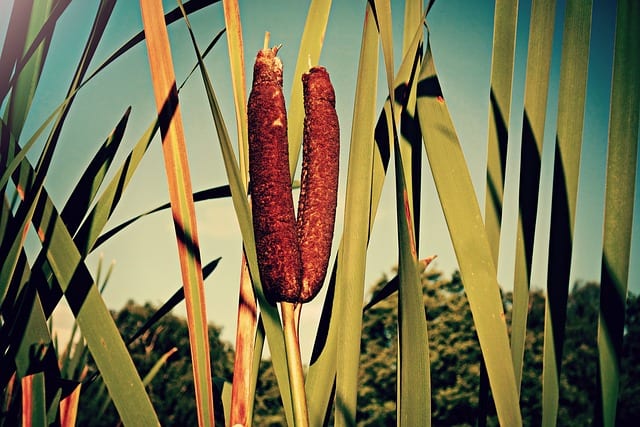
The common cattail is probably the most corn-dog-looking plant on our list! It’s Latin name is “typha latifolia,” and it is part of the Cattail family, which will dominate half of our list!
The common cattail is also known as a bulrush. It is tall, reaching nearly 9 feet tall at the highest. They are characterized by their incredibly long and straight stems.
The most recognizable trait of a common cattail is simply it’s corndog-like flower head. The long brown casing may look like it contains white fuzz, but actually, the corndog-looking part of the common cattail is made up of tiny little flowers! When the flowers open, which is during the fall, millions of fluffy seeds are visible.
The common cattail usually blooms in the midsummer months. It can be found in marshlands, lakes, ditches and ponds. It is rare to find the common cattail alone; they tend to grow closely together, like sentinels!
2. Graceful Cattail
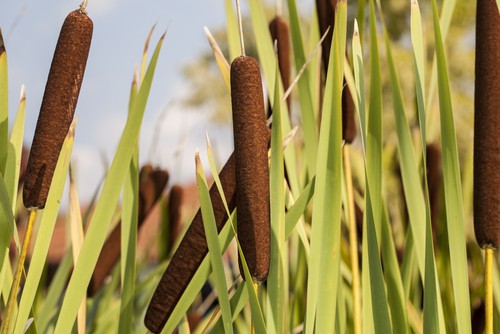
Next up on our list of corndog-like plants is the graceful cattail, close relative to the common cattail! Unlike its brethren, a graceful cattail’s flower head looks less like a traditional corn dog and more like a corn nugget!
A graceful cattail’s Latin name is typha laxmannii. It thrives in full sunlight and tends to bloom in the summer. The main difference between this member of the cattail family and its predecessor is size: graceful cattails are slightly smaller.
With a more round brown flower head and only reaching a height of 36 inches, the graceful cattail is still found in similarly wet places, lik the common cattail. The graceful variety is grown more often around ponds, or even in the water itself, and still grows in clusters close together.
3. Narrowleaf Cattail

A narrow leaf cattail is more similar to a jumbo corn dog than its predecessors. This member of the cattail clan has a much longer brown flower head and around four narrow leaves per stalk. It’s Latin name is “Typha angustifolia.”
The main difference between this long item of fauna and its brethren is that the narrowleaf cattail is not found in the south, but more often up in the northern states of America. It is also found in Africa and South America, in the same wetlands-type habitat that the previously-mentioned cattail plants are.
4. Miniature Cattail
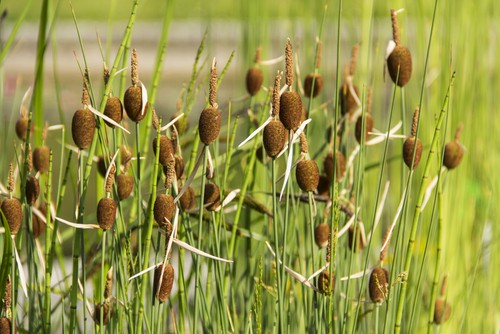
The miniature cattail is also called “typha minima” in Latin, or the dwarf cattail, or even the dwarf bulrush. In case you haven’t picked up on the pattern in naming, the main distinctive trait between this cattail and the others is that it is the smallest!
Not only is the miniature cattail small, sharing a more of a resemblance to a corn nugget along with the graceful cattail, but it is also rare. The miniature cattail cannot normally be found growing in the United States, and is instead found in the warmest climates of Asia or Europe.
The miniature cattail is a resilient plant, enjoying aquatic habitats and getting as tall as 31 inches in some places.
One of the most interesting facts about this smaller corndog-like plant is that all of it, from the stem to the flowers, is edible and nutritious! In fact, its pollen has been used to treat digestion issues, menstrual cramps, and even kidney stones.
5. Southern Cattail
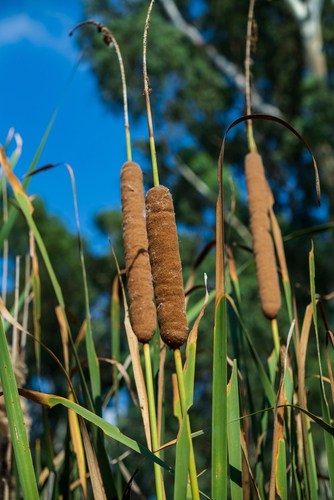
The last of the cattail family to make our corndog-like plant list is the Southern cattail, or “typha domingensis!” Other names include the slender cattail, for their thin flower heads, and tule cattails.
These are very similar to the narrowleaf cattail, with the main difference being that the southern variety is found near the East Basin of the United States.
The leaves and stems of the southern cattail were often used in building and cooking among Native Americans. They are found near freshwater sources and are, of course, distinguishable by the giant hotdog-shaped flower heads!
6. Pampas Grass
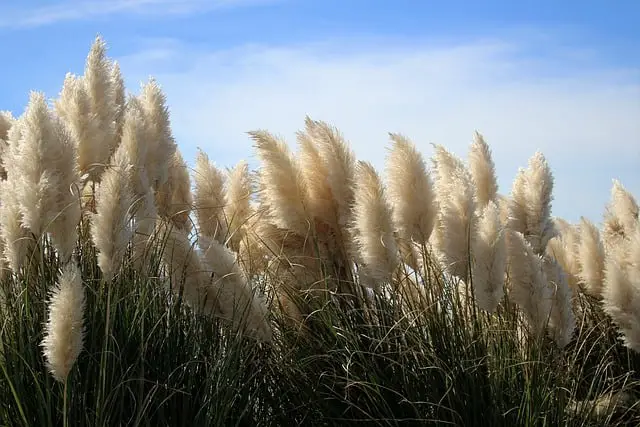
Pampas grass is notable for its long stalks and, from a distance, flower heads that look like corndogs on a stick from a distance. Up close, however, pampas grass looks less like a breaded hotdog and more like the feathers of a huge bird, or the tail of a fluffy cat.
Pampas grass is a speedily-growing type of grass with shoots that can reach 10 feet in height. One of the downsides of this plant is that it is actually an invasive species, and it’s seeds can spread and take root with frighteningly fast resilience!
7. Chenille Plant

A chenille plant, or acalypha hispida, is not named after the corn dog-shaped flowers it creates, but after a caterpillar! This is probably because, although shaped like a tasty hotdog, the flowers are closer in size and bright color to the insect.
These fuzzy flowers, called catkins, weigh down the stalks of the plant and can get as long as 18 inches! The chenille plant is most commonly found growing as a houseplant, but it is native to tropical areas.
8. Prince’s Feather
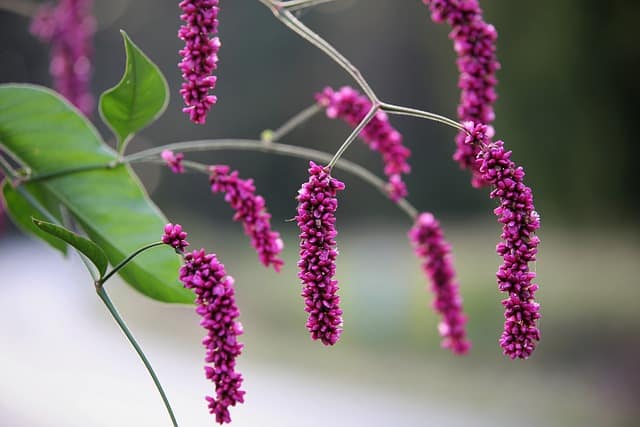
Prince’s Feather is a plant that goes by many names, including the Latin version, which is “amaranthus hypochondriacus.” However, most of these names, like Lady Bleeding, Prince-of-Wales Feather, and Cocks Comb, are all in reference to the flower it produces.
Prince’s Feather plants have small, decorative red flowers which form individual, corn dog-shaped clusters. These clusters, in turn, tend to orient themselves to create a pinecone-shaped arrangement near the top of the plant’s main stalk.
To farmers, Prince’s Feather is a weed. However, it’s beautiful foliage makes it another popular houseplant to add to the list!
9. Bastard Copperleaf
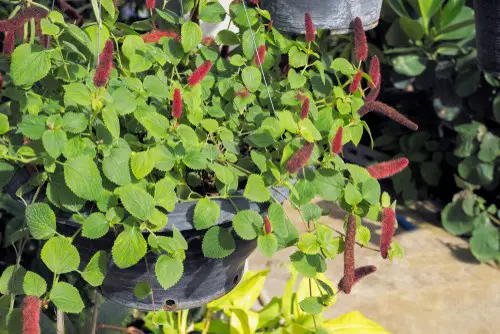
Like Prince’s Feather and the Chenille plant before it, the Bastard Copperleaf is a plant with corn dog-shaped, red, fuzzy flowers! It’s Latin name is “acalypha chamaedrifolia” though it has also been called the Everglades Copperleaf.
This herb blooms in every month of the year and is usually found in Florida, needing very little space for roots and growing around 10 inches in height when given the right conditions.
10. Alder Catkins
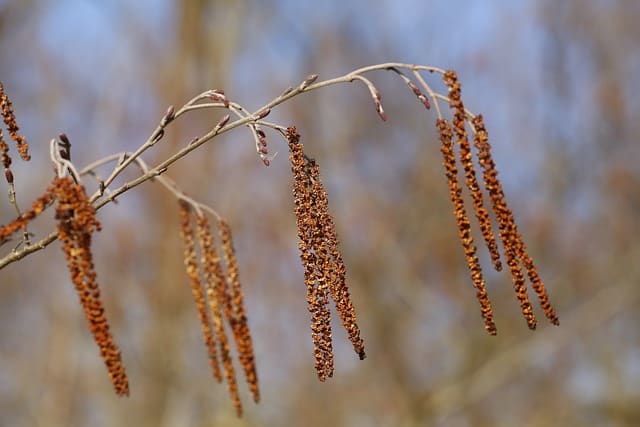
The catkin is a bundle of flowers or seeds usually found at the end of the stem of a plant, as is the case with the chenille plant mentioned above. However, trees can grow catkins too, and they look just as much like corndogs as the variety found on shrubs!
This is the case with the catkins found on the alder tree. Alders are usually 100 feet tall when they reach full maturity and they grow downward-hanging, reddish catkins in the springtime. Only an alder that is at least a year old will begin growing catkins.
Summary
In summary, the corndog-like shapes you see on plants are actually flowers. The flower heads that look the most like the commonly known corndog are found in the cattail family, with the common cattail taking the lead in resembling a hotdog on a stick most closely!
However, cattails aren’t the only plant that produce a corndog-like flower. Some flowering shrubs or herbs, as well as trees make a more colorful variety of flowers in the same shape. There you have it; our 10 plants that look like corn dogs!
Frequently Asked Questions
Here are some frequently asked questions related to the topic of plants that look like corn dogs!
What are the plants that look like hot dogs called?
The plants that look most like hot dogs are called cattails. They come in five distinct species: the common cattail, the narrowleaf cattail, the southern cattail, the miniature cattail, and the graceful cattail! These are also called bulrushes.
What other plants look like corn stalks?
Other plants that resemble corn stalks besides the narrow, closely-grown cattail are grasses like crab and quackgrass, sorghum, and giant reeds.
Are cattails corn dogs?
Cattails may have the same shape and rough size of a corndog, but they are actually flowers, not corndogs! If seeing one makes you hungry, don’t be tempted to take a bite: all you’ll get is a mouthful of fuzzy seeds!

Hey, I’m Lisa and I’ve been an avid gardener for over 30 years. I love writing, talking and living in the garden! Feel free to connect with me on my socials below

